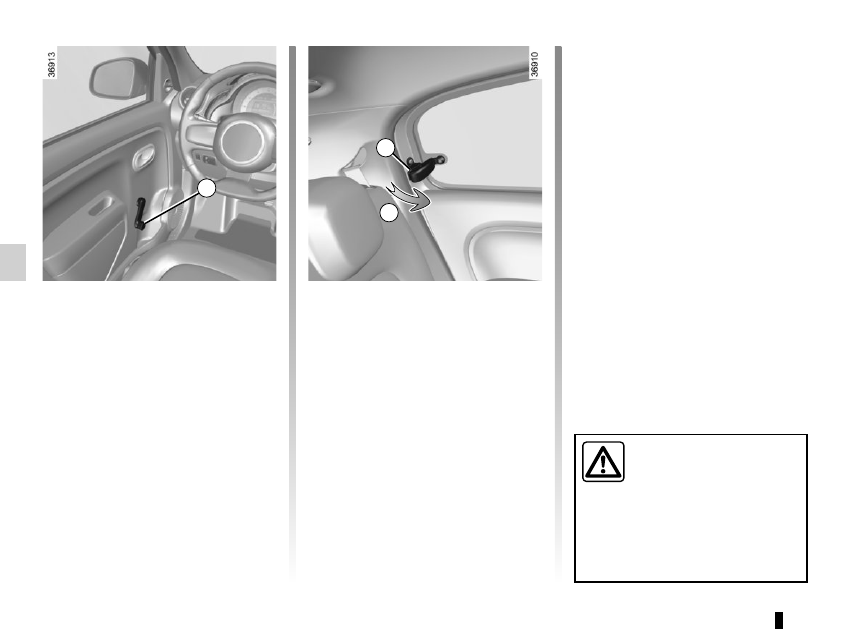Renault Twingo (2018 year). Instruction - part 9

3.14
ELECTRIC WINDOWS
(2/2)
4
Manual window winders
Move the handle 4 to lower or raise the
window to the desired height.
Rear windows
To half-open the window, turn handle 5
(movement A) then lock it by pushing
the handle to the right.
Make sure it is properly latched into po-
sition when it is closed.
5
A
Operating faults
Electric windows
In case of a fault when closing a window,
the system reverts to normal mode:
pull the switch concerned up as often
as necessary to fully close the window
(the window will close gradually), hold
the switch (still on the closure side) for
three seconds then lower and raise the
window fully to reinitialise the system.
If necessary, contact an approved
Dealer.
When closing the windows,
ensure that no part of the
body (arm, hand, etc.) is
protruding from the vehicle.
Risk of serious injury.